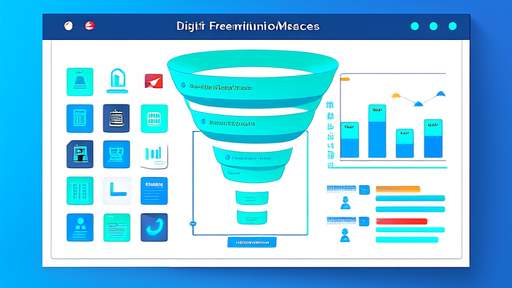The corporate landscape has witnessed a surge in spin-off transactions as companies seek to unlock shareholder value and streamline operations. Among the often-overlooked advantages of such strategic maneuvers lies the potential for tax synergies – a complex interplay of regulatory opportunities and financial engineering that can yield substantial benefits when executed with precision.
At its core, a spin-off involves the separation of a business unit into an independent, publicly traded entity. While the primary motivations typically revolve around strategic focus or market valuation, the tax implications permeate every stage of the transaction. From pre-spin restructuring to post-separation entity management, tax considerations can dramatically influence both the feasibility and ultimate success of the deal.
The initial structuring phase presents perhaps the richest vein of tax optimization potential. Companies must navigate a labyrinth of jurisdictional requirements to qualify for tax-free treatment under regulations like Section 355 of the U.S. Internal Revenue Code or equivalent provisions in other jurisdictions. The precise allocation of assets, liabilities, and intellectual property rights between parent and spin-off entity requires meticulous planning to avoid unexpected tax triggers while maximizing future tax positioning.
One frequently underestimated advantage emerges in the realm of transfer pricing. The separation creates opportunities to reallocate intercompany transactions under fresh transfer pricing studies, potentially resetting tax profiles for both entities. This proves particularly valuable when spinning off high-growth divisions that might benefit from alternative tax structures or when separating businesses with fundamentally different operating models that were previously constrained by unified tax reporting.
The capital structure of the new entity offers another dimension for tax optimization. Unlike internal divisions that share a corporate tax identity, an independent company can tailor its debt-equity mix to its specific circumstances. This flexibility allows for more efficient interest deductions and may open access to tax incentives or credits that were previously inaccessible or diluted within the larger corporate structure.
Jurisdictional arbitrage often emerges as a powerful driver of tax synergies in cross-border spin-offs. A division that struggled to demonstrate its standalone value within a multinational's consolidated tax position might flourish when freed to optimize its own global footprint. The spin-off entity can establish headquarters, holding companies, or operational centers in jurisdictions better aligned with its business model and growth trajectory, unencumbered by the parent company's legacy tax constraints.
Tax attribute preservation represents another critical consideration. Net operating losses, tax credits, and other favorable attributes that might have been trapped or expiring unused in the combined entity can often be more effectively utilized post-separation. The division of these attributes requires careful negotiation and regulatory compliance but can significantly enhance the value proposition for both entities.
The separation process itself creates opportunities for tax basis optimization. Assets transferred to the new entity may receive stepped-up tax bases in certain jurisdictions, while the parent company might recognize tax losses on the disposition of underperforming divisions. These balance sheet adjustments can have cascading effects on future depreciation schedules, amortization benefits, and eventual exit strategies for both companies.
Ongoing tax synergies extend well beyond the transaction date. As independent entities, both the parent and spin-off can pursue tailored tax strategies that might have been incompatible under shared ownership. This includes differentiated approaches to R&D tax credits, capital expenditure deductions, and international tax planning. The separation often reveals previously obscured tax planning opportunities that were impractical or invisible within the consolidated structure.
The human capital dimension of tax synergies frequently escapes adequate attention. Spin-offs typically necessitate the division of tax departments and systems, creating an opportunity to rebuild tax functions optimized for each entity's specific needs. This fresh start allows for the implementation of modern tax technologies and processes without the burden of legacy system constraints, potentially yielding long-term compliance efficiencies and improved cash tax management.
Indirect tax considerations add another layer of complexity and opportunity. VAT, GST, sales and use tax, and other transactional taxes often require complete reassessment post-spin. While this represents a compliance challenge, it also allows both entities to establish more efficient indirect tax structures and supply chain flows that better reflect their actual business operations rather than historical corporate conventions.
Shareholder tax implications form a critical component of the overall synergy equation. The tax-free nature of qualifying spin-offs for shareholders can create value that far exceeds operational synergies when compared to alternative monetization strategies like outright sales or IPOs that typically trigger immediate tax liabilities. This tax-efficient transition of ownership helps preserve shareholder value while providing liquidity options.
As regulatory environments continue to evolve, particularly with the global implementation of initiatives like BEPS 2.0, the tax synergy calculus for spin-offs grows increasingly sophisticated. Companies must weigh the potential benefits against emerging transparency requirements and anti-avoidance provisions. The most successful spin-offs from a tax perspective often involve scenario planning that models multiple regulatory futures, ensuring resilience across potential policy shifts.
The pursuit of tax synergies in spin-offs demands specialized expertise that bridges corporate strategy, tax law, and financial engineering. While the potential rewards are substantial, the risks of missteps loom equally large – from unexpected tax liabilities to failed qualification for tax-free status. The most effective approaches combine proactive planning with the flexibility to adapt as deal structures evolve and regulatory landscapes shift.
Ultimately, tax synergies in corporate spin-offs represent far more than mere compliance exercises or short-term financial engineering. When executed with strategic vision, they can create enduring competitive advantages for both the parent and spin-off entities, contributing to sustainable value creation that extends well beyond the separation event itself.

By /Jun 3, 2025

By /Jun 3, 2025

By /Jun 3, 2025

By /Jun 3, 2025

By /Jun 3, 2025

By /Jun 3, 2025

By /Jun 3, 2025

By /Jun 3, 2025

By /Jun 3, 2025

By /Jun 3, 2025

By /Jun 3, 2025

By /Jun 3, 2025

By /Jun 3, 2025

By /Jun 3, 2025

By /Jun 3, 2025

By /Jun 3, 2025

By /Jun 3, 2025

By /Jun 3, 2025

By /Jun 3, 2025

By /Jun 3, 2025